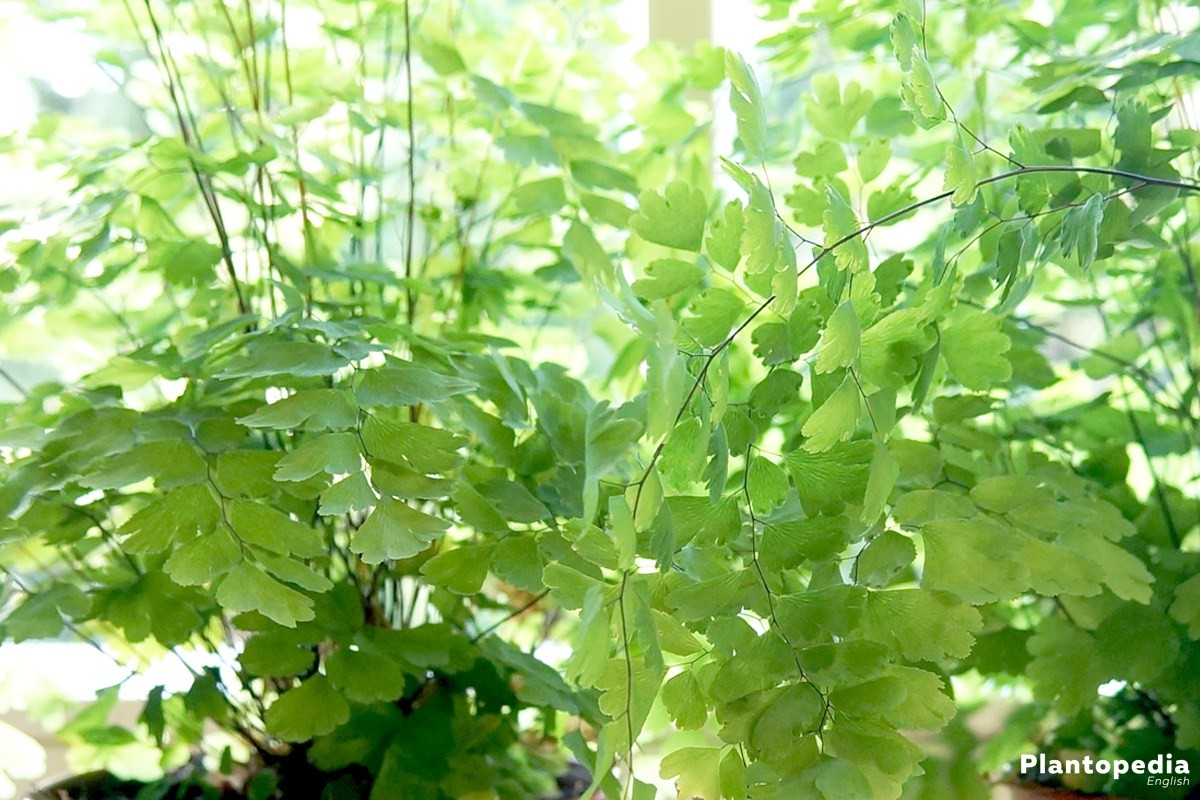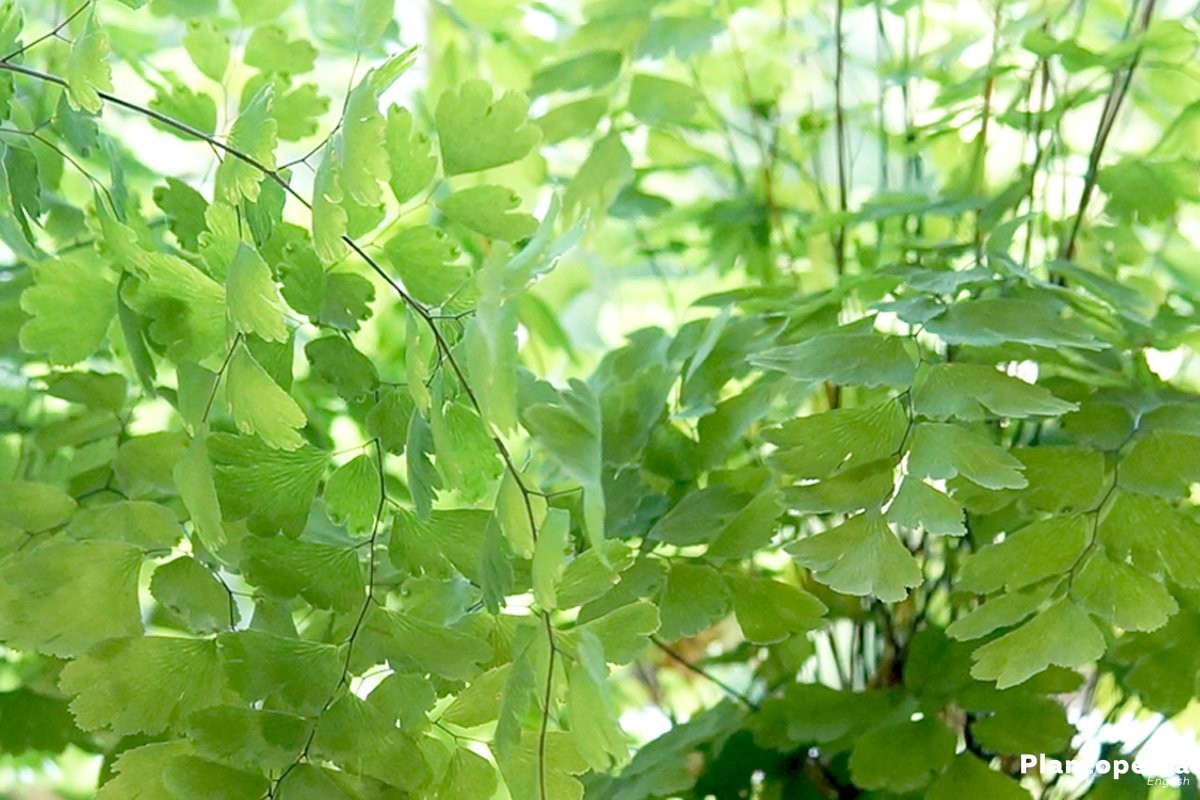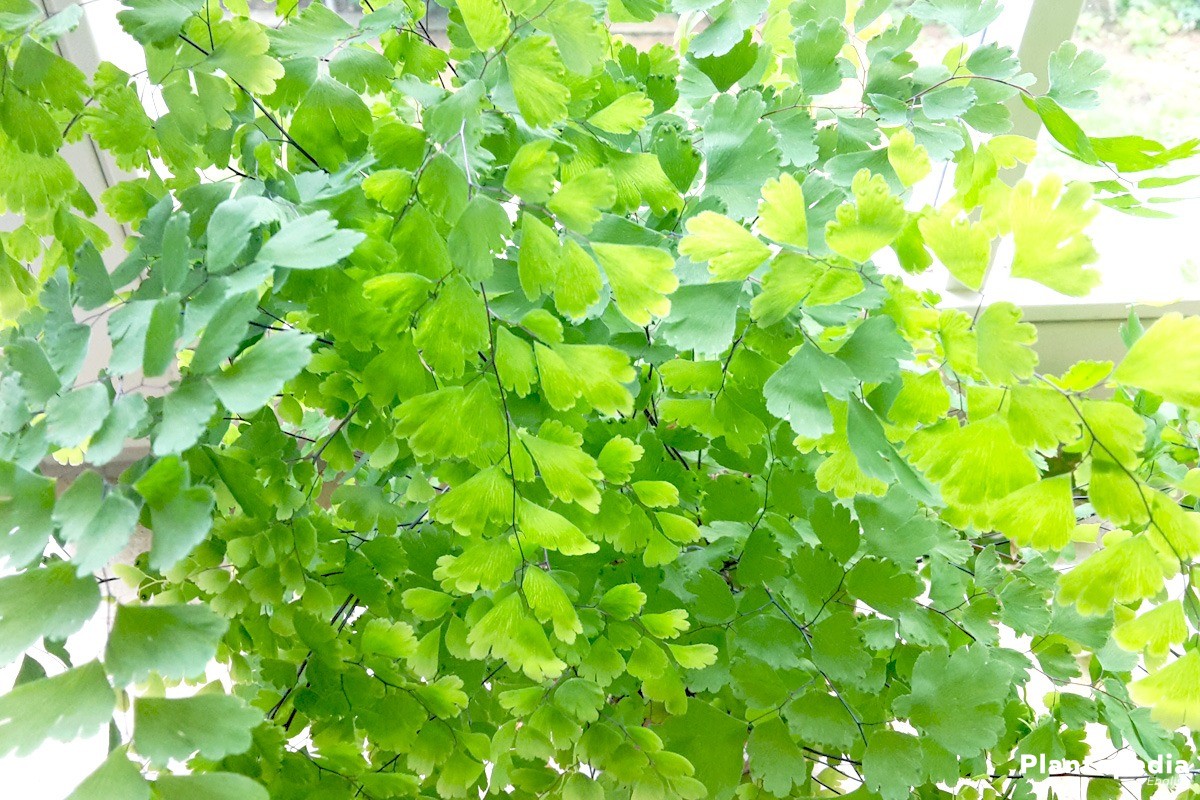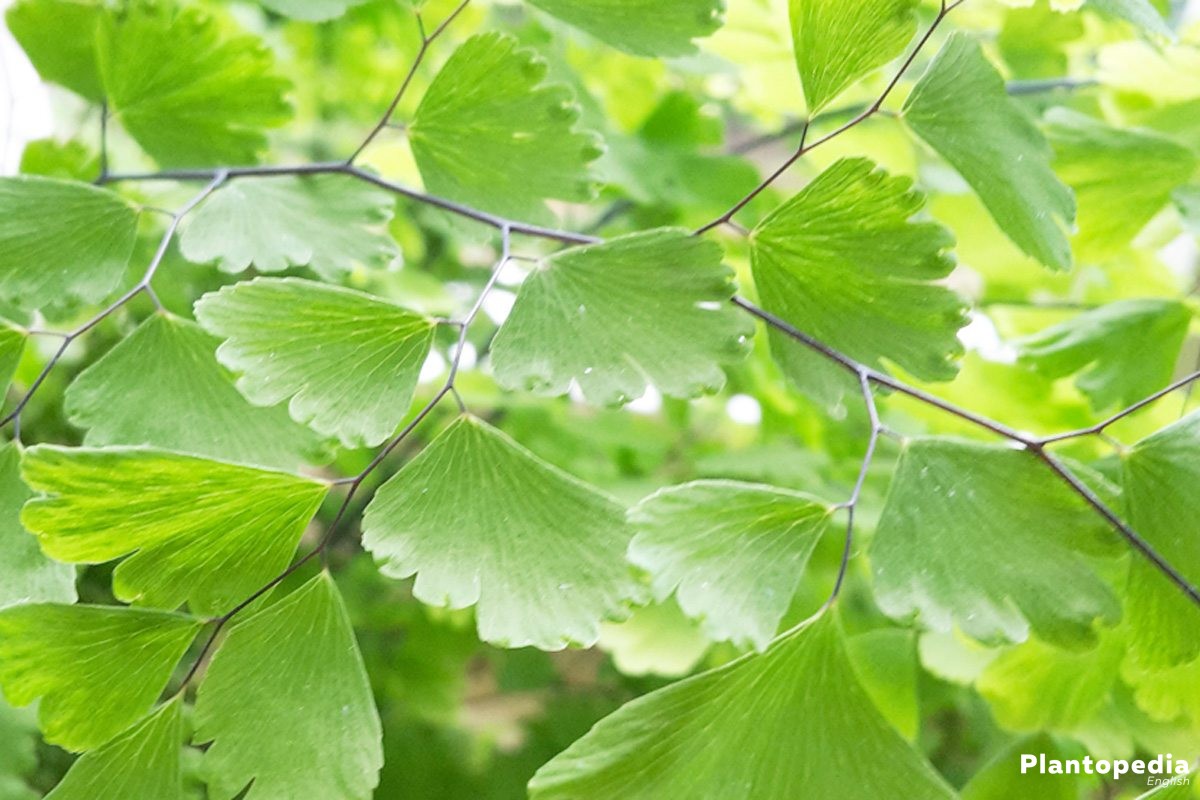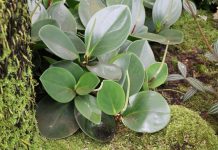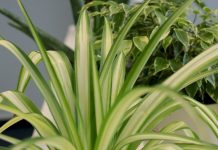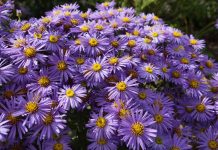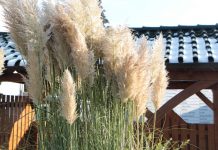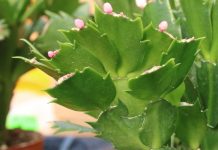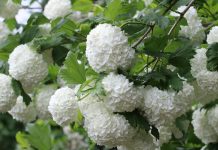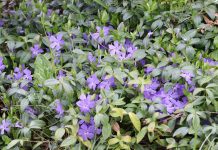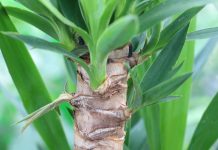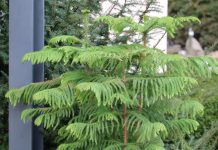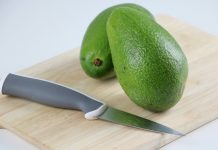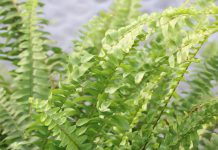An enchanting fragrance originates from the maidenhair fern, which decorates rooms, gardens and balconies as a standing or hanging plant. The pretty contrast between the evergreen leaves and the dark stems puts a colorful accent into boring rooms and outdoor areas. However, for a splendid growth and long life it requires the right care, which can be read in this professional care guide.
Plant Profile
Contents
- Plant family: Pteridaceae
- Genus: Adiantum
- Species: Adiantum capillus-veneris
- Trivial names: Venus hair fern, Southern maidenhair fern, black maidenhair fern
- Origin: Rainy tropical regions
- herbaceous, persistent plant
- height: 20-35 cm, some varieties up to 110 cm
- evergreen
- black, brown or dark purple petioles
- depending on the type, either hanging or upright-standing
- partially frost resistant
There are countless varieties of maidenhair ferns and they therefore offer the perfect match for every need and taste of a plant lover. Originally native to tropical rain regions, it now feels comfortable in Europe both in balcony boxes or pots and in flower bed, although not all varieties are winterproof.
The maidenhair fern is very undemanding, but there still is a certain need for care in order for it to grow healthy and powerful for many years. This detailed care guide explains what you should take attention to.
Care
The following care guide for the maidenhair fern will teach you how to cultivate, propagate and nurture it, so that you can enjoy the Adiantum capillus-veneris for a long time.
Location
In order to support the growth of the maidenhair fern which originates from the humid tropics, you should choose a suitable place for it. The temperature and light conditions are paramount.
The maidenhair fern loves the morning and evening sun, while it will quickly show brown leaves when it is exposed to the bright midday sun. It feels most comfortable in a half-shady place outside, also in the shelter of trees. You should make sure it receives the same light intensity from all sides so it can grow evenly.
When cultivated inside, places near windows with a southward or westward direction are best. It should be rotated now and then so that all sides receive sunlight. A rotary plate is the ideal choice for the maidenhair fern to be moved by a quarter turn every three to four days. Electric turn tables are commercially available which will receive you the work and rotate evenly.
Warm wind is no problem for the maidenhair fern. However, it is sensitive to cold drafts. It should be exposed to constant temperatures between 18 degrees Celsius and 25 degrees Celsius. Frost resistant varieties can remain outside.
Besides that, the maidenhair fern prefers a humid ambient air of at least 60 percent. This is why it should not be placed above heaters, from which dry air arise. Optimal is a location near an aquarium or indoor fountain as well as a place in bathrooms.
Soil conditions
In addition to the perfect location, the soil condition is an essential criterion for the thriving of a maidenhair fern.
It should always at least meet the following requirements:
- nutritious
- good permeability
- deficient in lime
- moderately moist
- pH-value between 5.0 and 6.0
Substrate
You should avoid using conventional potting soil for the sensitive maidenhair fern. Instead, use a high-quality substrate. It should be rich in nutrients and additionally include amounts of peat in order to provide a humous and loose basis.
If you still want to use conventional potting soil, you should add sand or pearlite. Big and substantial maidenhair ferns should be put in a clay-containing substrate. The clay provides more stability and stores more moisture.
Planting period
The optimal time for planting or repotting is between the end of March and the end of April. Outside, frost-sensitive varieties of the maidenhair fern should not be planted earlier than early summer, when the night temperatures are warmer.
Frost resistant varieties can be planted in the soil at any time between spring and late summer. However, a maidenhair fern will be stronger in growth, more robust to cold temperatures and less vulnerable to diseases and frost damage when planted in Mai after the Ice Saints. This provides enough time for it to get used to the new environment and it can survive the winter easier.
Planting in beds
Since maidenhair ferns tend to grow abundantly with an optimal location and good care, a sufficient planting distance is necessary.
The following aspects should be kept in mind then planting in beds:
- the planting distance should be at least 1/2 of the perimeter
- the plant hole should at least be twice as deep as the root ball
- place quartz sand, gravel or clay fragments on the ground of the plant hole to prevent waterlogging
- loosened soil, free from weeds and root residues, improves the permeability
- adding peat, compost or leaf mold improves the nutrient content of the soil
- if the surface of the soil is covered with gravel, moisture will remain longer in the area around the root
Planting in pots
In principle, this fern must be repotted, as soon as the first roots penetrate the soil’s surface. To do this, put the maidenhair fern out of the pot and shorten the roots by at least a third. When putting it back into the pot, you should use a new high-quality substrate and take attention to the instructions described in the section “Planting in beds”.
Watering
The higher the humidity, the less effort you will have to make when pouring. If the humidity is low, the leaves should be sprayed with lime-free water daily. In order to find the right amount of water for the soil, you need a little exercise and a sure instinct, as the maidenhair fern prefers a constant moist, but does not tolerate waterlogging.
You may follow the instructions below when watering:
- if the surface of the soil or substrate has dried, you have to pour
- if the leaves start to roll, an immediate pouring is required
- use lime-free water, such as rainwater
- alternatively, you can also use stale tap water
- never pour when there is direct sunlight to avoid burns
- in case of an extreme drought, dip the complete root ball carefully in a water bath
- when there are no more water bubbles, the maidenhair fern can be planted back in the pot or bed
In order to reduce the water expense, you can also prepare a water storage for the maidenhair fern. In the case of potted plants you can fill a saucer with gravel and allow water to run in. Through the pot’s drain hole, the root supplies itself with water and you will not have to check the moisture daily.
As an alternative and particularly for bedding plants, so-called adapter bottles are suitable. These are filled with water and put into the ground with the adapter upside down. The principle is the same as the saucer filled with gravel and water.
Fertilizing
When fertilizing, you should be careful, because for the maidenhair fern less is more. Too much fertilizer causes more damage than using no fertilizer at all. In general, you should use a slightly concentrated liquid fertilizer for green plants. Make sure the soil is moist before fertilizing.
The details for fertilizing:
- those in conventional flowering soil: fertilize every four to six weeks between March and August
- those in a nutrient-rich substrate: fertilize every eight to ten weeks between March and August
- those that have just been planted or repotted in nutrient-rich soil should not be fertilized before the following year
Trimming
The maidenhair fern does not have to be cut back. It is enough to cut off withered shoots and, if necessary, dried fronds. Fronds are in this case cut off shortly above the ground. In beds the frost robust maidenhair fern will grow lusher if frostbite is removed in spring.
Overwintering
The fern does not rest in winter, but you should still mind some details.
Cultivation inside
- do not position a maidenhair fern above a radiator
- if the humidity drops due to heating air, the maidenhair fern has to be sprayed with water more often
- it is also advisable to install air humidifiers
- the frond should not be sprayed
- water less – the surface of the soil can be slightly dried
- do not fertilize between September and March/April
- the room temperature must not be less than 15 degrees Celsius
- ensure sufficient light on long, gray rainy or snow days
Frost resistant varieties outside
- place tub plants on wooden or Styrofoam supports so the icy coldness does not reach the roots
- keep the plant bucket in a wind-protected place
- cover the bedding area around the root ball with pine needles, stray or foliage for insulation
- when the temperature is below -10 degrees Celsius, it is recommended to stretch a warming fleece over the maidenhair fern
- check the dryness of the soil also in winter and pour a little if necessary
- in case of frost and sub-zero temperatures, you should not pour
Reproduction
As one of the most beautiful ferns, several specimens are very popular. You can simply cultivate them through propagation.
Splitting
A strong specimen can easily be propagated through splitting. This should be done in spring before the beginning or the growth period.
Proceed as follows:
- take the maidenhair fern out of the soil
- cut the root ball into a desired number of segments using a sharp knife
- make sure every segment has at least three fronds
- plant every root segment in a nutrient-rich substrate
- moderately pour the substrate
- cultivate the split maidenhair ferns just like adult ferns
- fertilize for the first time in the following year
Sowing
The maidenhair fern can be generatively propagated by sowing. Due to the lack of blossoms and seeds, you have to use the spores for this reason, which can be found on the bottom side of the fronds. They are small brown capsules which turn into fine dust in the maturity phase as you touch upon them.
When sowing, proceed as follows:
- cut of the complete frond
- place it on a piece of paper for two to three days for it to dry
- the spores usually fall on the paper after drying
- fill a small pot or a propagator with cultivation soil
- space the spores on the soil’s surface
- sieve fine sand upon it and dampen the sand
- alternatively, you can also use vermiculite
- stretch a transparent plastic film over the pot or propagator
- place the seeds in a half-shady area
- recommended temperature: between 22 degrees Celsius and 25 degrees Celsius
- germination period: three to four weeks
- pricking: As soon as the young plant has reached about 5 centimeters
Diseases
Type-specific diseases to the maidenhair fern are not known. However, waterlogging can cause a disease that can make the maidenhair fern die off in the worst case.
Root rot
If the maidenhair fern is kept too wet or exposed to waterlogging, it usually does not take long for the root rot to infect the plant. In that case, the maidenhair fern has to be put out of the soil and drained immediately. The rot can be recognized by softened root parts and a white covering on the roots. Cut off these root areas using a sharp knife.
Check the hardness of the root parts every day. When they have solidified and become more rigid, you can plant the maidenhair fern in a new nutrient-rich substrate. Keep the substrate only slightly moist in the first days and then slowly revert to the normal pouring. Doing so, you can save the maidenhair fern from dying in most cases.
Pests
In contrast to diseases, a pest infestation is usually not due to wrong care. However, you should know that the maidenhair fern is sensitive to chemical remedies and household remedies are preferable.
Aphelenchoides
Aphelenchoides prefer moist places. Although they are inserted by the water, regular spraying of the fern’s leaves attracts them to rise into the interior of the leave and suck up the leaf cells there. As a result, the leaves turn brown. The plant dies.
At this point you should act immediately. Cut off all brown leaves. Reduce the pouring at the same time and do not spray the leaves anymore. Plant protection products on a biological basis support the pest control.
Aphids
Aphids love nearly all fleshy green plants. Also the maidenhair fern. These small crawling animals can be recognized by their white, punctiform shape. They usually settle on the upper surface of the leaves. In the case of a small infestation, a hard water jet is usually enough. For larger infestations a soapy solution is helpful. Sprinkle the fern with it daily for at least seven days.
Spider mites
Spider mites are similar to aphids, but are usually found below the leaves that fade over the time. It is promising to put the maidenhair fern into a transparent, translucent plastic bag for example. Within ten days the spider mites will usually have died. However, the maidenhair fern must still be watered meanwhile.
Varieties
A total of 220 fern species are known, of which each has numerous varieties to offer, like the maidenhair fern, which is the most famous one.
Adiantum tenerum
- is the scientific term for Farleyense varieties of the fan maidenhair ferns
- this one is particularly popular for its pink shimmer
Delta maidenhair (Adiantum raddianum)
- is distinguished by its broad growth direction and triangular fronds
Adiantum hispidulum
- is the title for the rough maidenhair which is characterized by its robustness and rapid growth
The other most common varieties of the maidenhair fern include the five-fingered fern, the offshoot forming, the bushy and the Australian maidenhair ferns.




